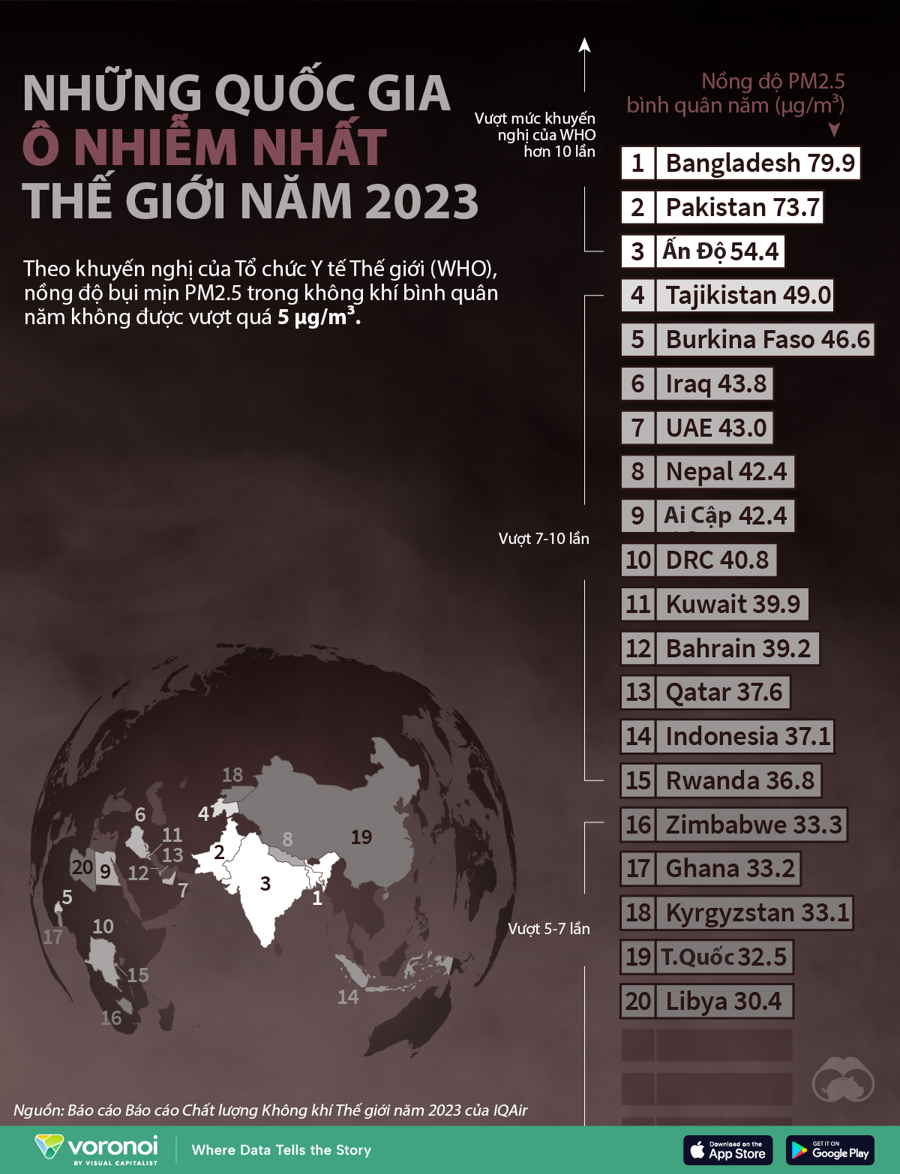Most of the world’s population is breathing unsafe levels of air, a new data visualization shows.
The infographic below shows the world’s most polluted countries, ranked by average annual PM2.5 air pollution (micrograms per cubic meter of air) in 2023.
PM2.5 are tiny particulate matter with a diameter of 2.5 micrometers or less—small enough to penetrate deep into the lungs and cause health problems. In 2021, the World Health Organization (WHO) updated its air quality guidelines for PM2.5, lowering the recommended maximum annual average exposure level from 10 μg/m3 to 5 μg/m3. Major sources of PM2.5 include vehicle engines, power plant emissions, smoke from fires, and dust in the air.
A 2022 Air Quality Life Index (AQLI) study found that 97.3% of the global population lives in areas where PM2.5 levels exceed WHO guidelines. This exposure reduces global life expectancy by an average of 2.2 years compared to what it would be if the air met WHO standards. In South Asia, the AQLI estimated that people lose an average of 5 years of life expectancy due to air pollution. South Asia has been a global air pollution hotspot for many years, with 37 of the world’s 40 most polluted cities.













